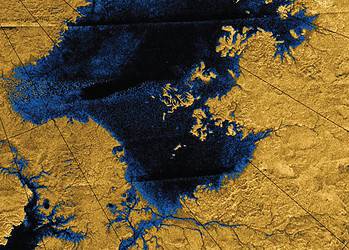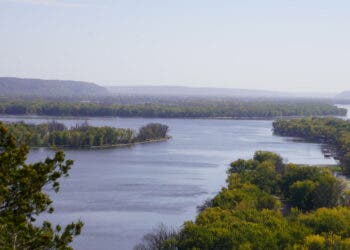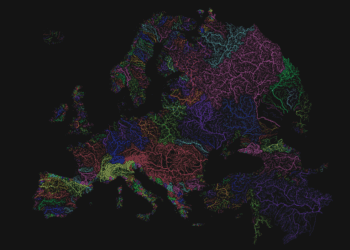Rivers can appear to have different colors, from blue to yellow, which is connected to water quality and the amount of sediments, algae, and dissolved organic carbon in water. But this can vary over time, with one-third of large rivers in the United States having changed their color over the last 35 years, according to a new study.

Rivers are among the most degraded ecosystems on earth. Water quality is affected by human activities such as agriculture and urbanization, with only 23% of the Earth’s largest rivers flowing uninterrupted to the ocean. To an extent, we can actually distinguish water quality with our eyes, just by looking at its color.
While researchers know that many rivers have been affected globally, often due to poor water quality, the color of rivers hasn’t been widely measured to investigate changes through space and time. This was the goal of a group of scientists from the University of North Carolina, headed by John Gardner.
“Because large rivers integrate millions of kilometers of land area, understanding rivers and their impairments is inherently macroscale: both distant and local impacts generate the patterns we observe,” the researchers wrote. “There is a profound need for integrative water quality measurements.”
Measuring water quality at continental to global scales remains challenging over inland waters due to optical complexity, or the presence of multiple water quality constituents. The three main ones are chlorophyll, suspended sediment, and colored dissolved organic matter, which can alter the colors of the river.
Satellites act as “eyes in the sky” and regularly observe the earth’s large rivers. Using satellite remote sensing records from 1984-2018, Gardner and his team measured the color of rivers across the US. They found that large rivers have distinct seasonal patterns in the color that was synchronous with the long-term flow regime.
In the study, the team classified rivers across the US as yellow, green, or blue and cataloged color changes over three decades and a half. Those ones near urban centers and dams were the ones to change the fastest over the year. Climatic and landscape properties can control de colors of rivers but in-channel effects such as dams can reset the colors, the researchers argue.
Among rivers within the top 25 percentile of rates (faster rates of change), 45% are near a dam (within 25 km upstream or downstream) and 22% are located within urban areas. However, among rivers within the bottom 25 percentile of rates (slowest 350 rates of change), only 12% are near a dam and 7% within urban areas.
The researchers observed three dominant seasonal patterns referred to as spring red-shift, summer red-shift, and aseasonal. Summer red-shift was more common in the western part of the US, likely driven by snowmelt driven flow and sediment pulses. Spring red-shift was more common in the eastern part of the country, while asesonal occurred in rivers where color varied within a narrow range.
Overall, the researchers believe the database could be used to monitor large-scale changes in river ecosystems, as it’s straightforward to classify color on the basis of satellite imagery. With more validation, river color can be used as a potential proxy for ecosystem processes and provide a critical data layer for aquatic species distribution models for organisms that are sensitive to environmental conditions.
The study was published in the AGU journal.






